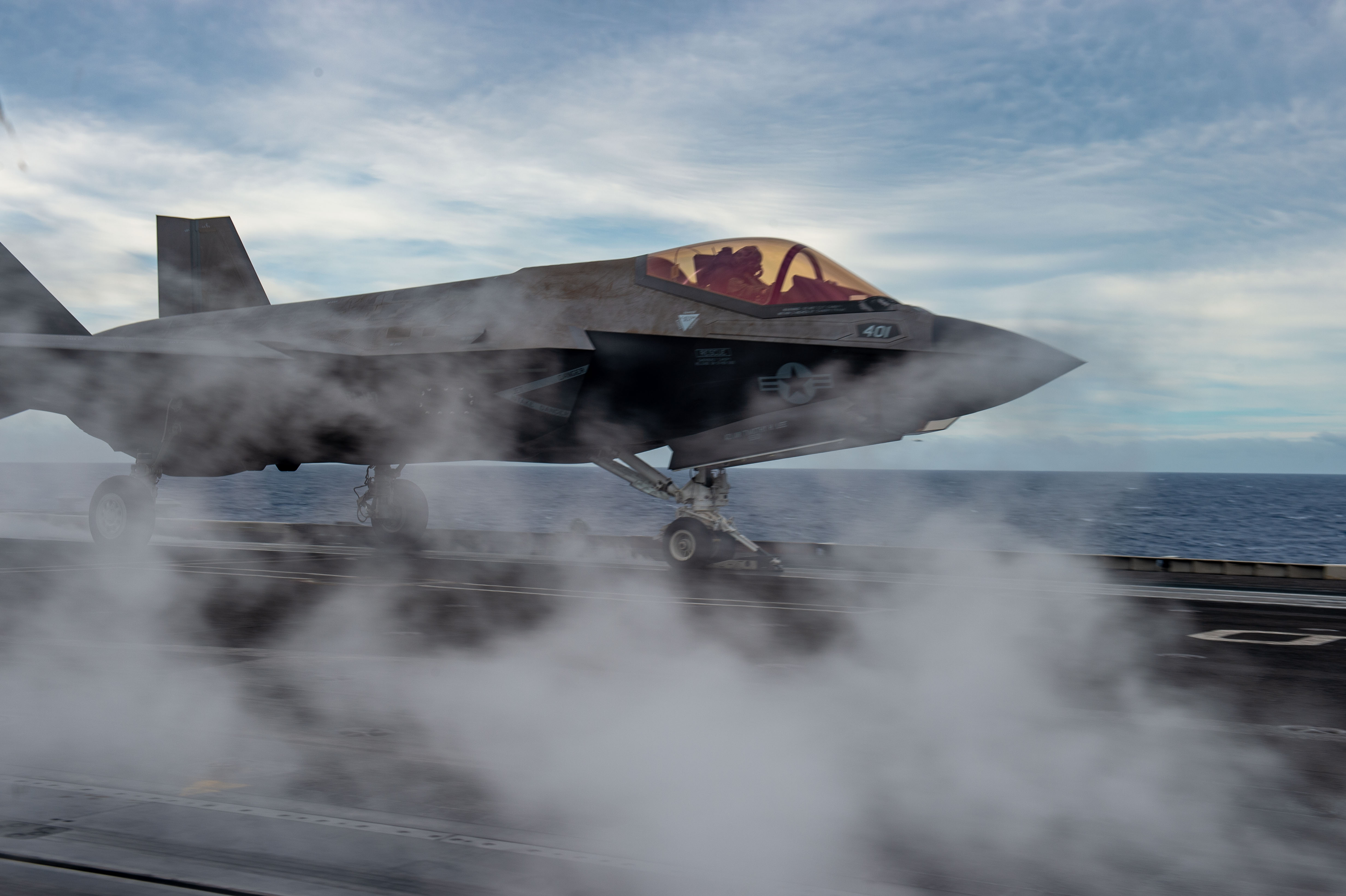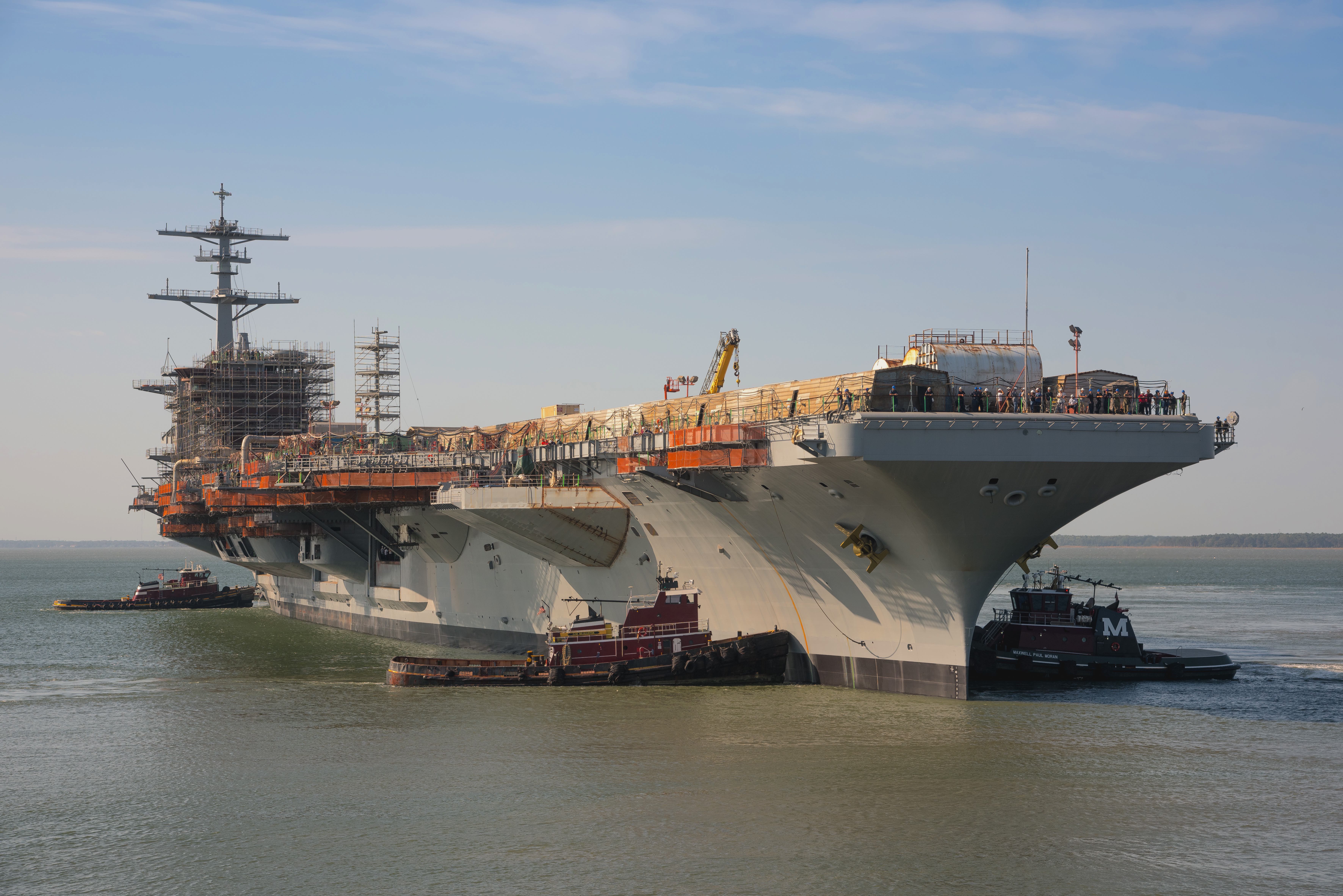
The Navy is asking for more missiles, spare parts and F-35C Lighting II Joint Strike Fighters in its $4 billion unfunded list of priorities to Congress as part of the Fiscal Year 2023 budget rollout, according to a copy of the report reviewed this week by USNI News.
At the top of the list is $23 million to convert more than 100 early SM-6 missiles into combat-ready weapons and $33 million for 11 additional Long Range Anti-Ship Missile (LRASM) over the 60 requested in the FY 2023 budget.
The Navy is also asking for $346M for ship spare parts across the fleet and training exercises as part of the Pacific Deterrence Initiative as the second and third priority items.
Lower down, the Navy has asked for six Lot-17 F-35Cs for $708 million.
The Pentagon cut F-35 acquisition across the Air Force, Marines and Navy from a planned 94 to 61 total tails. The Navy requested 13 F-35Cs and 15 F-35Bs in its FY 2023 budget proposal.
“The numbers did come down from a previous budget view and that simply reflects the balance of this budget request as you look at our portfolios increasing for ship construction, in [research and development] while focusing readiness,” Rear Adm. John Gumbleton, the Navy’s deputy assistant secretary for budget, told reporters during a Monday briefing.
In the unfunded request, the Navy said the Lot-17 F-35Cs would bring an 8000-hour airframe to the fleet, along with additional weapons capabilities.
The Navy wants two additional E-2D Advanced Hawkeye for $399.9 million to add to the five in the FY 2023 budget request.
The service has a requirement for 86 of the E-2D airborne early warning aircraft however is set to end the line at 78. The two additional tails will bring the fleet up to 80.
“This addition maximizes industrial capacity and will increase readiness, aircraft availability and reduce operational risk,” reads a description from the list.
The Navy is also requesting $446.2 million for three KC-130Js to create a squadron to replace the legacy C-130T aircraft as an intra-theater transport, specifically to move F-35 engines in support of resupply for embarked carrier strike groups.

Additionally, the service wants $43 million to complete the refueling and complex overhaul of USS George Washington (CVN-73). The Navy extended the delivery of the ship from December 2022 to March 2023.
The request, “funds $25M re-delivery cost and $20M in time related services totaling $45M. This is in addition to the $62M cost-to-complete funded in PB23 request based on updated re-delivery date shift after PB23 submission,” reads a description of the line item.
There is an $11.2 million line-item to expand the capacity of the Independence-class Littoral Combat Ship to use its Twin-Boom Extensible Crane to launch and recover the Mine Counter Measures unmanned surface vessel (USV).
“Funds enable Littoral Combat Ship (LCS) to launch (and recover) a fully-fueled ordnance-loaded Mine Countermeasures (MCM) Unmanned Surface Vessels (USV) from the Twin-Boom Extensible Crane (TBEC) through Sea State 4 conditions,” reads the request.
The Navy is also asking for $25.3 million to increase its marketing and advertising drive. The service stopped advertising on television in 2019., reported USNI News at the time.
“The operational recruiting landscape has changed following the pandemic and Navy is challenged in identifying and reaching high quality candidates, particularly in hard to fill enlisted ratings and officer designators. Individual propensity to serve remains low and these resources will allow Navy to reach a larger segment of the market that might not otherwise have considered service in the Navy,” reads a description of the line item.
Absent from the list are any funds to support keeping the Freedom-class Littoral Combat Ships in the fleet in any capacity. The Navy is set to decommission the nine Freedoms currently in service due to a combination of failures of the anti-submarine warfare package and costs to fix a class-wide issue in the ship’s propulsion system, Navy officials said on Monday.





